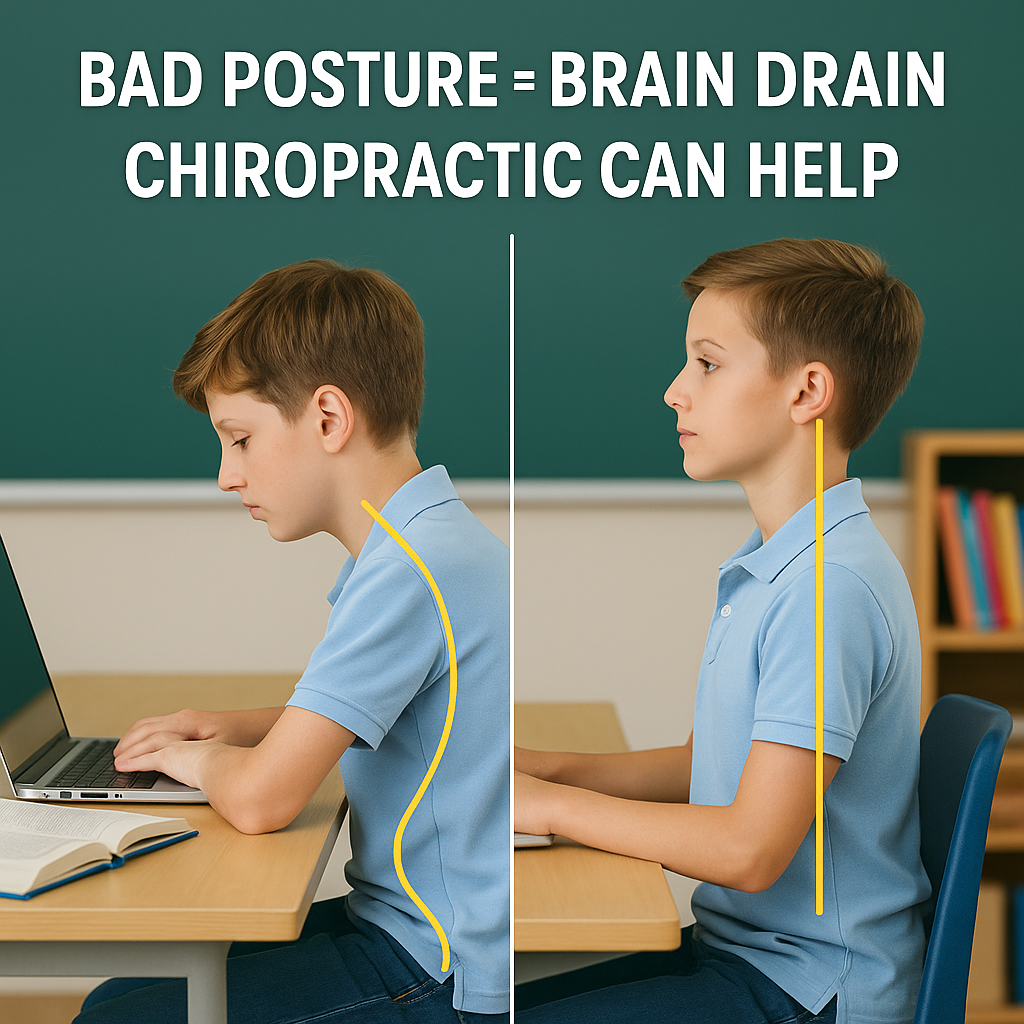(619) 465-4880
You’ve probably heard that “sitting is the new smoking.” And while that may be an exaggeration, there’s no doubt that prolonged sitting—especially with poor posture—can take a toll on kids’ bodies and minds.
In the classroom and at home, many children spend hours hunched over desks, Chromebooks, or tablets. Over time, this forward-head posture and rounded shoulders can cause more than just back pain—it can affect energy, breathing, and even concentration.
Multiple studies have linked poor posture to fatigue, headaches, reduced respiratory function, and slower cognitive performance (Kang et al., 2021; Walsh et al., 2021).

So how does slouching lead to poor focus?
When the spine is well-aligned, the brain receives clear, balanced information from the body. This supports not just physical function, but emotional and mental processing too.
Even subtle habits can lead to long-term problems. Watch for:
As a parent, you can make a big difference by creating posture-friendly environments and modeling healthy habits.
Try these strategies:
At Awesome Family Chiropractic, we help students thrive by addressing underlying tension in the spine and nervous system. With gentle pediatric adjustments, we can:
Even one adjustment can noticeably improve posture awareness and comfort—especially during those long school days.
For older kids and teens with more ingrained posture issues, we also offer movement education and at-home exercises to strengthen postural muscles and develop better habits.
Poor posture isn’t just about how kids look when they sit—it can impact their oxygen intake, energy levels, and even their ability to focus in school. If you notice your child slumping, leaning forward, or complaining of aches and fatigue, it may be time to address posture both at home and with professional care. Simple ergonomic changes, posture breaks, and movement throughout the day all make a difference, but chiropractic adjustments go further by relieving spinal tension and restoring proper alignment. This back-to-school season, consider scheduling a posture-focused adjustment at Awesome Family Chiropractic to help your child sit taller, breathe easier, and thrive in the classroom.
This blog is for educational purposes only and not a substitute for professional medical advice. Consult a healthcare provider before starting any new treatment. Outcomes and experiences discussed may vary. For immediate medical concerns, contact your physician.